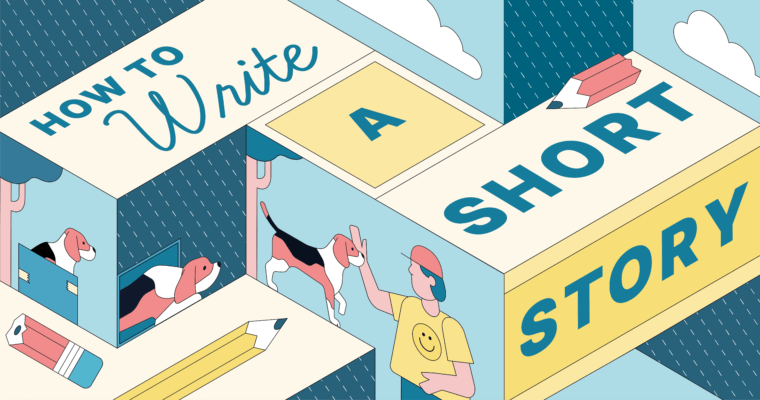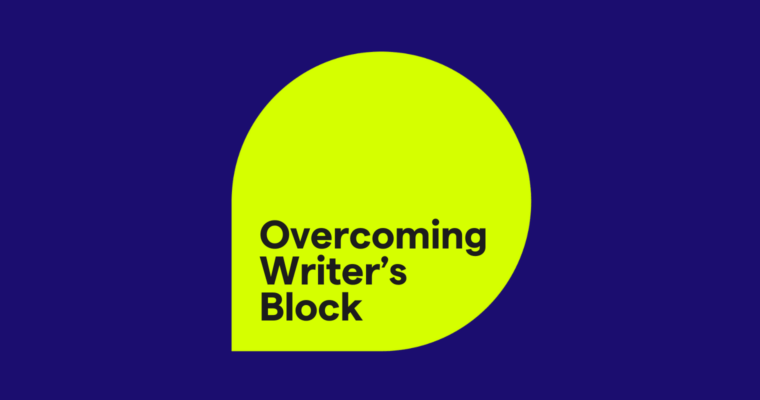
Short stories are to novels what TV episodes are to movies. Short stories are a form of narrative writing that has all the same elements as novels—plot, character development, point of view, story structure, theme—but are delivered in fewer words. For many writers, short stories are a less daunting way to dive into creative writing than attempting to write a novel. This doesn’t mean writing short fiction is easy—it, like every other kind of writing, comes with its own unique challenges.
If you’re wondering how to write a short story, we’re here to help. We’ve got tips for everything from coming up with short story ideas to fleshing out a plot to getting your work published in literary magazines.
What is a short story?
A short story is a short, self-contained work of fiction that generally falls between 1,000 and 10,000 words.
Because of this length constraint, short stories tend to be less complex than longer works—in certain ways. In a short story, you can build a world, but not to the extent you can build a world in a (longer) novel. Similarly, you can have multiple fleshed-out characters, but you can’t give every character a full backstory and meaningful character arc like you can in a lengthier work. Generally, long, intricate plots with multiple subplots are better suited to novel-length works than a short story.
Don’t take this to mean your short story’s theme can’t be as deep as a longer work’s theme. You don’t need an extensive world with a complex magical system and an entire cast of three-dimensional characters to express a theme effectively. While short stories have fewer words, simpler settings, and smaller casts than novels, they can have just as much of an impact on readers. If you’re looking to read a powerful short story and see how other authors communicate substantive themes in just a few thousand words, check out these famous, impactful works:
- The Thing Around Your Neck by Chimamanda Ngozi Adichie
- “The Lottery” by Shirley Jackson
- “Thank You Ma’am” by Langston Hughes
- “Sonny’s Blues” by James Baldwin
How long should a short story be?
Like we said in the previous section, short stories typically contain between 1,000 and 10,000 words. Stories longer than 10,000 (but shorter than 40,000) words are generally considered novellas. You might even come across the term novelette to refer to a story between 7,500 and 17,000 words. Once you hit about 50,000 words, you’re in novel territory (and you’ve won NaNoWriMo!)
Stories that clock in under 1,000 words are known as flash fiction and stories of 500 words or fewer are considered microfiction.
There’s really no limit to how short a story can be, though. Consider Hemingway’s famous six-word story:
“For sale: baby shoes, never worn.”
In just six words, Hemingway evokes an entire scene and the backstory that led to that scene. This is an extreme example of a short story, and it relies on the reader extrapolating meaning from the words, but because it does so successfully, it counts as a short story.
What’s in a short story?
Every short story has these five elements:
- Character
- Plot
- Theme
- Conflict
- Setting
Characters are the people (or animals, aliens, mythical creatures, or sentient objects) who do the action in your story. Your protagonist is the character who undergoes some kind of change (or lack thereof) as a result of the story’s main conflict. Your antagonist is the character (or something abstract) attempting to prevent the protagonist’s change. To clarify, the antagonist doesn’t have to be a person—it could be the protagonist’s environment, their society, or even an aspect of themselves.
>>Read More: What Is Direct Characterization in Literature?
Plot is the series of events that illustrate the story’s conflict. When you’re writing a short story, it’s generally best to start your plot as close to the end as possible. In other words, if your story is about an alien who visits Earth and then retreats, horrified, back to her spaceship, start your story just as she’s approaching Earth or just as she’s touching down. You can build up a backstory later through tools like dialogue, flashbacks, and the protagonist’s actions. With a short story, you don’t have space for a lengthy exposition, so drop your readers right into the action.
A short story’s theme is its central message. This is the point the author wants readers to take away from their work.
Conflict is the action that drives the story’s plot. It’s the obstacle the protagonist has to overcome or the goal they’re attempting to reach. A conflict can be internal, like our example alien setting out to prove to herself that she can manage a mission to Earth on her own, or it can be external, like the protagonist striving to prove to her society that Earth is a worthwhile planet with which to establish a relationship.
Setting is the time and place where a story’s action occurs. For example, our alien story’s setting might be Nevada in 1955.
How to write a short story
Mine your imagination
Just like every other type of writing, a short story starts with brainstorming. In fact, the process for writing a short story is the same writing process you use for other kinds of writing, like essays and presentations.
Ask yourself this: What do I want my short story to be about? Jot that down. Do you already have a clear idea of who your characters are or the setting they’ll inhabit? Or are you starting with a theme you want to convey, and now you need to develop a story to express that theme?
Start your brainstorming session with the elements you already have, then flesh out your story idea from there. Write down your setting, your characters, the conflict they face, and any key plot points you have in mind. You can fill in details later; right now, the goal is to have some rough data to use for your outline.
Don’t move on to outlining until you’ve defined your story’s conflict. Without a conflict, you don’t have a story. Although all of the five elements listed above are necessary for writing a great short story, conflict is the one that drives your plot, shapes your characters, and enables you to express your theme.
The next step in writing short fiction is outlining your story.
When you outline your story, you organize the notes from your brainstorming session into a coherent skeleton of your finished story. Outlining your story is a key part of prewriting because it’s where you develop your story’s framework and sketch out how each scene follows the previous scene to advance the plot. This stage is where you determine any plot twists or big reveals and fit them into the story’s sequence.
Next, it’s time to write.
Don’t worry about grammatical mistakes—you’ll fix them later.
Don’t worry about your narration or dialogue being extraneous or not making complete sense—you’ll fix that later too. Right now, you’re working on a rough draft. Just get that story out of your imagination and onto the page without being self-conscious about it.
Keep that first draft as tight as possible. You’re writing a short story, after all, so be economical with your words. Keep these tips in mind as you write:
- You don’t need to explain everything. Give enough explanation so the reader understands what’s happening in a scene; don’t slow them down with paragraphs of backstory and exposition.
- Keep the ending in mind. As you write, determine whether each sentence ultimately progresses the plot. If it doesn’t, either cut it or rework it so it does progress the plot.
- Listen to how people speak. Then, write dialogue that sounds like real conversations. These conversations won’t necessarily be grammatically correct, but they will make your characters sound the way people naturally speak.
Once you have a finished first draft, let it rest. If you have the luxury of waiting a day or so to come back and read what you wrote, do that. That way, you can read your writing again with fresh eyes, which makes it easier to spot inconsistencies and plot holes.
Then it’s time to edit. Read your writing again and note any places where you can make the writing more descriptive, more concise, more engaging, or simply more logical. At this stage, it can be very helpful to work with readers’ feedback. If you’re comfortable sharing your work and receiving constructive criticism, share your rough draft with friends and family—and, if possible, with other writers—and let their feedback guide the revisions you make.
Move past creative blocks
So you’ve got writer’s block.
Writer’s block can strike at any point in the writing process. You might have a great idea for a short story, then find yourself struggling as you try to brainstorm ways to transform that idea into a narrative. Or you might have no problem brainstorming and creating a coherent outline, but then feel like you’re running into a wall as you try to write linear scenes and craft realistic dialogue that advances the plot. Or maybe you aren’t stuck in the sense that you don’t know what to write, but you’re having a hard time determining the most effective way to write it.
It happens to every writer.
Because writer’s block is such a universal condition, we gathered up a few helpful tips you can use to defeat writer’s block and write effective, engaging scenes:
Give a writing prompt a shot
If getting started is what’s giving you a hard time, consider using a writing prompt. A writing prompt is like kindling for your short story. They’re generally brief, at just a sentence or two, and describe scenarios writers flesh out into full-fledged stories. Run a web search for “writing prompts” and you’ll find a ton. You can even tailor your search to a specific genre, like “horror writing prompts” or “romantic comedy writing prompts.”
Skip the scene and work backward
When a particular scene is what’s making it difficult to move forward, skip it. There’s no rule that says you have to write your short story in order. Just move ahead to the next scene that you can write, and then when you’re finished, revisit the challenging one. In many cases, it’s easier to write a scene once you know what happens after it.
Sprint
We’ve talked about writing sprints before. They’re a great way to make yourself write faster. When it comes to busting through that brick wall of writer’s block, sprinting can put you into a mindset where you’re writing words, any words, just to reach the word count goal you set. You probably won’t craft publishable prose this way, but you’ll likely find creative ways through the difficult scenes that you can build on later.
Where to distribute your short story
If you’re like most authors, one of your goals is to publish your story.
There are two main ways to do that: traditional publishing and self-publishing.
In the short fiction world, traditional publishing generally means having your work published in a literary magazine. There are thousands of literary magazines currently being published around the world, each with a unique combination of editorial focus, publishing schedule, submission process, acceptance rate, and payment for authors.
Some literary magazines accept nearly every story they receive. Others select very few—as in, a single-digit percentage of the stories submitted—to publish. You can find literary magazines and contests through resources such as Poets & Writers, Duotrope, and Writer’s Digest.
If you’ve got a collection of short stories that together are approximately book-length, you can also query agents to have your work published that way. A few well-known short story collections include The Things They Carried by Tim O’Brien and A Manual for Cleaning Women by Lucia Berlin.
The other way to publish your work is self-publishing. With self-publishing, you don’t need to have your work greenlit by a magazine editor or a publishing house. Although that hurdle isn’t present, self-publishing can be a complex process. As a self-published author, you’re responsible for everything, including these elements:
- Your story’s cover art
- Professional editing
- Formatting
- Marketing
Whether self-publishing is the right route for your story depends on your goals for the story. If you’re looking to have your work featured in a widely circulated magazine, guaranteeing that thousands of people (or more!) read it, traditional publishing is the way to go. If your priority is to simply get your work out there, or if you want total control of every part of building your platform as an author, self-publishing can be the perfect choice.
Popular self-publishing platforms include Kindle Direct Publishing, CreateSpace, Apple Books, and Barnes & Noble Press. Each has a unique publishing process and royalty rate for authors.
You can also self-publish your short story on your blog. Blogs are personal (and professional) outlets for writing, and if you’ve got a story to tell and don’t want to go through the process of getting it published or going the “traditional” self-publishing route, you can create a blog and publish your work there.
Finding a writing community
For many authors, being part of a writing community is a key part of staying in regular writing practice and striving to grow as a writer. Writing communities exist online and offline, with some existing as simply places for writers to connect with each other and others offering up more structure, like a regular critique schedule. There are also writing communities built around writing challenges like NYC Midnight and NaNoWriMo.
If you think you’d benefit from being part of a writing community, find one that fits what you’re looking for—or start one yourself! You can find writing communities on social media and through websites like meetup.com. Other places to look for writing groups are local libraries and bookstores and if you’re a student, your university. Being part of a writing community can help you get your work published in two ways:
- You can have other authors read and critique your work, giving you direction that will help you make it stronger when you revise.
- Other writers can connect you with literary magazines, contests, and agents to potentially work with. If they’ve been published, they can also answer your questions and give you writer-to-writer advice on what to do (and what not to do) when you’re trying to publish your work.
Tell your story with confidence
We all have stories inside us. Writing your story is what makes you an author, and even the most accomplished authors need help catching grammar mistakes and other issues in their writing. That’s what makes Grammarly an ideal writing assistant. Write what’s in your heart and on your mind, then when it’s time to edit, Grammarly will catch any mistakes you might have missed, flag wording that isn’t clear, and suggest the right tone for telling your tale.






